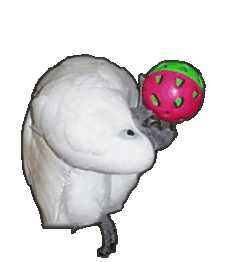Published Feb 9, 2005
So I’ve been light on the updates lately. I’ve been a busy bee, getting things done at school. Case competitions, midterms, clubs, fundraisers, networking, interviewing, and planning a start-up that I should think about for the future — these all fill up my schedule. This is a lot to do, even in business school, and I can handle all of this only because I’m pretty ruthlessly organized. From time to time, other people have commented on my organization. So I thought I’d write down a few ways in which I keep my life (sometimes too much) under control.
In his book Getting Things Done David Allen asserts — quite correctly — that the whole point of being organized is to relieve one’s brain of the daily drudgery of keeping track of a million little things, a veritable Backup Brain. This frees one’s brain up to work on more important things.
One of my core philosophies — ever since I became organized (that’s a blog entry in itself) — has been that, if my organization system doesn’t enable me to sit down at my computer in the morning and know 100% of the things that I need to do that day (modulo, of course, any new incoming tasks), without having to think in any way at all. Better, even, the organizing system should help me to prioritize the tasks. The GTD philosophy reinforces that and includes a bunch of tools to manage various kinds of tasks.
I’m a big believer in technology solutions to problems, so I use Outlook and my Series 60 phone to track all this stuff. Since reading GTD, I realized what was holding me back from being successful in Outlook — putting all of my to-dos in one place, assigning each to-do to a date. Part of having a system that doesn’t need minding is not having to figure out whether or not something needs to get done today. So I split my to-dos in two: half I keep on the Outlook TaskPad, next to the Calendar, categorized into the day on which they must get done. The other half, which should be done but are not attached to a specific day, sit on a seperate task list and are organized by the context in which they must be done. Errands are categorized as @Home, if I have to write someone it’s @E-Mail, and so forth. When I have a few minutes, or find myself screwing around on my computer, I look for what I can do @ my current context.
It’s really important to manage information as it moves in and out of this system. Managing my inbox is key, and I’ve found that two things in particular make this easy:
- I act on every e-mail the minute I read it. I have dozens of folders that hold information in very fine-grained ways, so there’s always a place to put things. Anything that hits my inbox that takes about two minutes, I do straight away. I create a task for anything that has a next step that takes longer than that time period, so nothing ever disappears, and nothing needs to sit in my inbox.
- My inbox is a queue, not a stack — the oldest mail is at the top and the newest at the bottom. This creates a powerful incentive to keep up-to-date on my incoming mail, because the latest stuff gets pushed down off the bottom of the screen. And who doesn’t want to see the newest mail?
I also make it easy to see what’s going on, just by looking at Outlook: I color-code everything. This makes it easy to glance at my calendar or inbox and see what’s important without having to spend the mental energy of switching away from whatever I’m doing now to poke through my inbox or to-do list.
This is a great, self-reinforcing system. By doing any one part of this system, it makes it easier to do the other parts of this system. And systems like that usually work. To some people, all of this time being organized seems like a waste, but, to me, it lets my mind be free to think about things other than when that one appointment is, or what’s due next class for Management Accounting.
